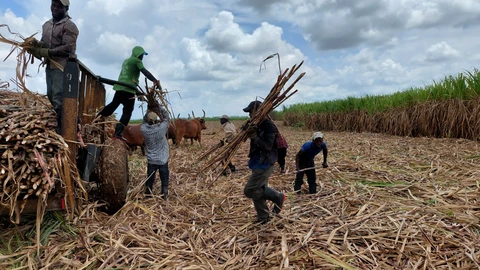Variety is key: can profitable agricultural practices be sustainable too?
November 29, 2023.
Where and how can diversified farming practices be put to profitable use in order to boost both productivity and biodiversity? Researchers at ZEF/University of Bonn have tackled this question in a study that has now been published in “Communications Earth & Environment.”
A research team under the lead of Hannah Kamau (junior researcher at ZEF and member of Junior-Professor Lisa Biber-Freudenberger’s working group in the Innovation and Technology for Sustainable Futures Transdisciplinary Research Area at the University of Bonn) applied a method taken from ecology and used for modeling species distribution to their study so that they could make predictions about where in the world diversified farming practices could be profitable. To this end, the research team considered over 2,000 locations all over the world that were found to have profitable diversified farming practices as well as socio-economic conditions that determine profitability: population density, access to local markets, electricity supply, gross domestic product per capita and governance.
Hannah Kamau and her team then predicted which other regions of the world had similar conditions as the observed locations of profitable diversified farming practices. Her predictions suggest that the Global North and parts of the Global South that are close to urban centers are particularly suitable for profitable diversified farming practices. “Developed infrastructure played a key role in forecasting suitable areas,” she explains.
In addition to identifying potentially suitable regions, Kamau also determined how production in each individual area could be increased sustainably. “There are two approaches to boosting production,” she says. “The first is extensification, which means expanding agricultural areas. The other is intensification, i.e. ramping up cultivation density. Depending on the region, diversified farming practices can help make both extensification and intensification more sustainable. But each approach has its risks.”
Which approach is more promising depends on the region in question. Agricultural land in Western Europe, China, parts of India and Brazil as well as Eastern Europe that is already being intensively farmed could benefit from various forms of extensification such as incorporating mixed planting and lowering the cultivation density. While areas in sub-Saharan Africa and parts of Brazil, India,Tajikistan as well as Canada, and Australia could benefit from intensification according to the study. Other areas may be suitable for both options, such as most parts of West Africa.
Funding
The study was funded by the German Federal Ministry of Education and Research (BMBF) as part of the project entitled “At the Science Policy Interface: LANd Use SYNergies and CONflicts within the framework of the 2030 Agenda” (LANUSYNCON) [01UU2002].
Publication
Hannah Kamau, Shahrear Roman, Lisa Biber-Freudenberger: “Nearly half of the world is suitable for diversified farming for sustainable intensification,” in “Communications Earth & Environment.” DOI: https://doi.org/10.1038/s43247-023-01062-3
Full text
Read the full press release launched by University of Bonn on November 29, 2023
in English
and in German


